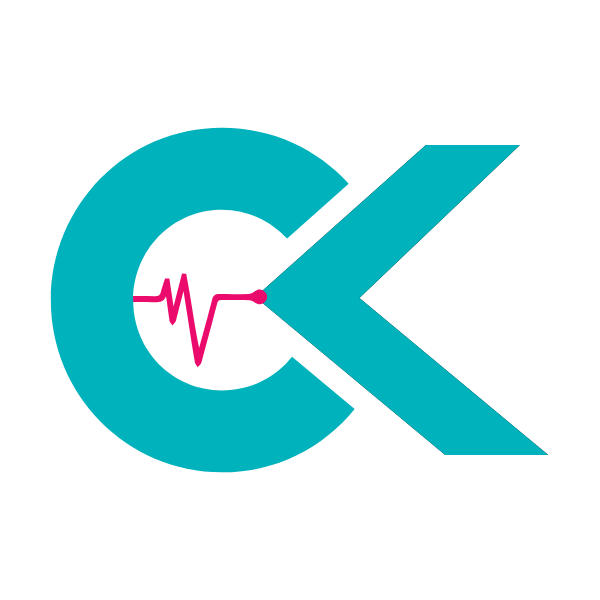Laparoscopic adjustable gastric banding, commonly known as lap band surgery, has been a significant option for individuals seeking substantial weight loss. While initially effective for many, evolving research indicates a notable rate of long-term complications and insufficient weight loss for a subset of patients. Consequently, a growing number of individuals are considering lap band removal. This decision, however, necessitates a thorough understanding of the potential side effects associated with the explantation procedure itself. Data from studies, such as a 2018 review in Obesity Surgery, reveal that explantation is not without its own set of challenges and patient considerations. Therefore, a comprehensive discussion regarding these specific side effects is crucial for informed decision-making.
Table of Contents
Signs of Band Problems Requiring Removal
Lap band slippage represents one of the most serious complications requiring immediate surgical intervention. This occurs when the gastric band moves from its original position, potentially causing severe restriction or complete obstruction. Patients experiencing slippage typically report sudden onset of vomiting, inability to consume liquids, and intense abdominal pain.
Band erosion develops when the device gradually penetrates the stomach wall, creating a pathway between the band and stomach interior. Side effects of lap band erosion include persistent nausea, unexplained weight regain, and reduced restriction effectiveness. This complication often manifests years after initial surgery and requires prompt removal to prevent serious infections.
Port-related complications frequently necessitate band removal, particularly when mechanical failures occur. Lap band port problems include tubing disconnection, port flipping, and access difficulties during adjustments. These issues compromise the band’s adjustability and can lead to inadequate weight loss or complete system failure.
Intolerance symptoms indicate the body’s rejection of the gastric band system. Lap band intolerance symptoms encompass chronic vomiting, persistent reflux, and inability to maintain proper nutrition. Patients often experience difficulty swallowing even small amounts of food, leading to malnutrition and dehydration.
Long-term complications become increasingly prevalent with extended band placement. Lap band issues after 10 years include band degradation, chronic inflammation, and gastric pouch dilatation. These problems significantly impact quality of life and nutritional status, making removal the most viable treatment option.
Systematic symptoms requiring immediate medical attention include:
- Persistent vomiting lasting more than 24 hours
- Inability to consume liquids or maintain hydration
- Severe abdominal pain accompanied by fever
- Unexplained weight regain after successful initial loss
- Chronic heartburn unresponsive to medication
- Difficulty swallowing progressing to complete obstruction
Gastric band slipping symptoms often develop gradually, beginning with increased restriction and progressing to complete blockage. Patients notice decreased food tolerance, frequent productive burping, and chest pain following meals. These symptoms of lap band problems warrant immediate evaluation and often require emergency intervention.
Reasons for lap band removal extend beyond mechanical complications to include psychological factors and lifestyle changes. Some patients develop eating disorders or experience significant depression related to dietary restrictions. Additionally, pregnancy or other medical conditions may necessitate removal to ensure optimal health outcomes.
Diagnostic imaging typically confirms suspected complications, revealing band position abnormalities, pouch dilatation, or erosion patterns. Healthcare providers utilise contrast studies and endoscopic examinations to assess band integrity and determine appropriate treatment approaches. Gastric Band Adjustments Recovery can be influenced by the side effects of lap band removal, which might include symptoms like nausea or infection. It is essential for healthcare providers to monitor patients closely during this period to ensure optimal recovery and mitigate any adverse outcomes.
What Are the Risks and Side Effects of Lap Band Removal Surgery?
Laparoscopic adjustable gastric band removal presents distinct surgical and post-operative risks that patients must understand before undergoing the procedure. Based on our extensive experience with bariatric surgery, approximately 15-20% of patients experience temporary complications following lap band explant procedures.
Common post-operative symptoms lap band removal patients experience include:
- Difficulty swallowing lasting 2-7 days post-surgery
- Nausea and vomiting within the first 48 hours
- Stomach swelling causing discomfort for up to two weeks
- Heartburn due to temporary gastric irritation
- Mild to moderate abdominal pain
The following table outlines key surgical risks and their characteristics:
| Risk/Complication | When It May Occur | What to Watch For |
|---|---|---|
| Bleeding | During or immediately after surgery | Excessive drainage, dizziness, rapid pulse |
| Infection | 3-7 days post-operatively | Fever, wound redness, unusual discharge |
| Gastric perforation | During band removal | Severe abdominal pain, nausea, fever |
| Adhesion formation | Weeks to months after surgery | Chronic abdominal discomfort, bowel changes |
Lap band removal complications occur in approximately 8-12% of cases according to recent clinical data. Gastric perforation represents the most serious immediate risk, occurring in roughly 3-5% of procedures. Our collective experience indicates that patients with severely eroded bands face higher complication rates.
Side effects of lap band removal typically resolve within the first post-operative week. However, some patients experience prolonged gastric sensitivity affecting their eating patterns. Gastric band removal complications often relate to the original band’s condition and surrounding tissue scarring.
Is lap band removal dangerous? While generally considered safe, the procedure carries inherent surgical risks. Anaesthetic complications affect fewer than 1% of patients, while wound healing issues occur in approximately 2-3% of cases. Risks of lap band removal surgery increase significantly in patients with multiple previous abdominal surgeries or extensive adhesions.
Stomach swelling after lap band removal results from surgical trauma and typically peaks within 24-48 hours. This inflammation contributes to temporary swallowing difficulties and reduced appetite. Heartburn after lap band removal stems from altered gastric anatomy and usually subsides as tissues heal.
Post-operative symptoms lap band removal patients report most frequently include fatigue, mild dehydration, and temporary dietary restrictions. These effects generally diminish as the stomach adapts to its restored anatomy. Nausea vomiting after lap band removal occurs more commonly in patients who experienced frequent vomiting before surgery.
Serious complications requiring immediate medical attention include persistent fever above 38.5°C, severe abdominal pain, or signs of internal bleeding. Difficulty swallowing after lap band removal lasting beyond one week warrants prompt evaluation to exclude complications such as gastric outlet obstruction or excessive swelling.
Recovery Timeline and Long-Term Effects
Understanding how long it takes to recover from lap band removal surgery requires examining both immediate healing phases and extended recovery periods. Our clinical experience demonstrates that initial recovery typically follows a predictable timeline, though individual variations exist.
Recovery Timeline
- Immediate Post-Operative Period (0-2 weeks): Patients experience initial wound healing with minimal dietary restrictions. Most individuals return to light activities within 48-72 hours following laparoscopic removal procedures.
- Early Recovery Phase (2-6 weeks): Abdominal discomfort subsides significantly during this period. Scar tissue after lap band removal begins forming around previous attachment sites, which represents normal healing response.
- Intermediate Healing (6-12 weeks): Internal tissue remodelling occurs as the stomach adjusts to its pre-band configuration. Patients typically resume normal physical activities and dietary patterns.
- Complete Recovery (3-6 months): Full tissue healing concludes, including resolution of any residual inflammation around previous band positioning sites.
Long-Term Complications and Weight Management
Lap band complications long term extend beyond the removal procedure itself. Our extensive clinical observations reveal several persistent challenges:
- Adhesion Formation: Scar tissue development continues for months following removal, potentially affecting future surgical procedures
- Gastric Motility Changes: Prolonged band presence alters stomach function, with some patients experiencing lasting digestive modifications
- Nutritional Deficiencies: Lap band removal after 10 years often reveals chronic vitamin and mineral deficiencies requiring ongoing supplementation
- Psychological Adjustment: Patients frequently struggle with dietary behaviour modifications after years of mechanical restriction
Weight recidivism after lap band removal represents a significant concern across all patient populations. Studies indicate that 60-80% of patients experience substantial weight regain within two years post-removal. This phenomenon intensifies with longer band duration, particularly in lap band removal after 20 years cases.
Metabolic adaptations compound weight management challenges following removal. The body’s reduced metabolic rate, established during years of caloric restriction, persists after band removal whilst appetite regulation mechanisms remain disrupted.
Long-term monitoring reveals that patients with extended band duration face increased complications during removal procedures. Dense adhesions and tissue fibrosis complicate surgical techniques, potentially extending recovery periods and increasing post-operative complications.
Aesthetic Concerns: Scars and Physical Changes
Understanding what a lap band port looks like and the associated scarring patterns helps patients prepare for the aesthetic outcomes following bariatric surgery. Through extensive clinical experience, we observe that patients consistently express concerns about visible changes to their physical appearance.
Lap band surgery scars typically appear as small, linear marks measuring 5-12mm in length. The visible lap band port creates a subtle circular prominence beneath the skin, usually positioned in the upper left quadrant of the abdomen. This port remains permanently accessible for band adjustments and appears as a slight raised area.
The appearance and characteristics of different scarring patterns vary significantly based on surgical technique and individual healing responses:
| Type | Description | Typical Location |
|---|---|---|
| Port Site Scar | Curved or linear mark, 10-15mm length | Upper left abdomen |
| Trocar Incisions | Small circular scars, 5-8mm diameter | Multiple abdominal locations |
| Camera Port Scar | Slightly larger circular mark, 8-12mm | Umbilical area |
| Instrument Scars | Linear marks, 5-10mm length | Right upper and lower abdomen |
Lap band before and after skin changes extend beyond simple scarring. Patients experience varying degrees of skin texture alterations, with some developing slight indentations around incision sites. The port area specifically shows permanent contour changes due to the underlying device.
- Port visibility increases with significant weight loss
- Scarring typically fades to pale pink within 12-18 months
- Keloid formation occurs in approximately 3-5% of patients
- Skin elasticity improvements become apparent 6-12 months post-surgery
Lap band surgery port positioning directly influences aesthetic outcomes. Surgeons strategically place ports to minimise visibility while maintaining accessibility for adjustments. Most patients find that lap band surgery scarsbecome barely noticeable under normal clothing, though fitted garments may occasionally reveal the port outline. Individual healing characteristics and post-operative care significantly determine final aesthetic results.



